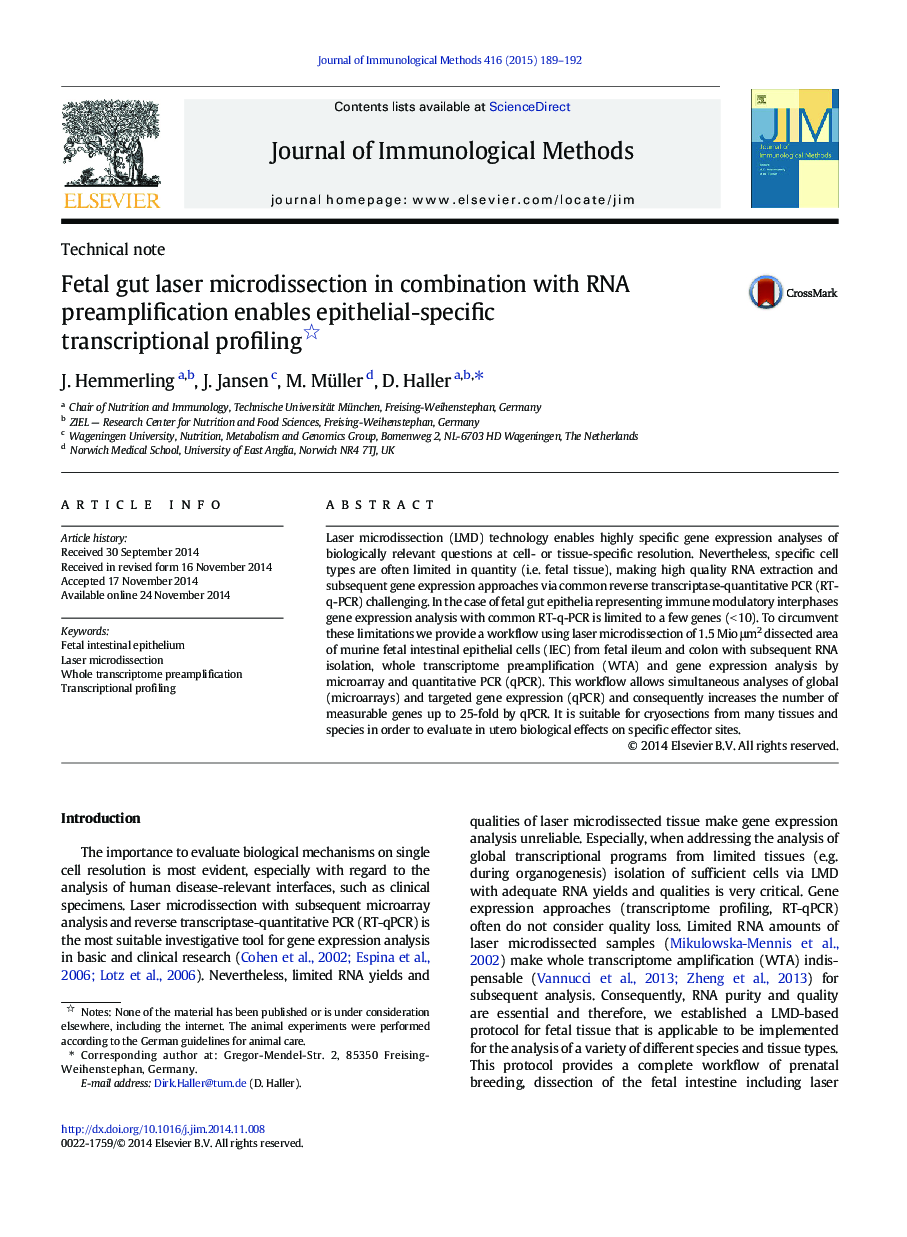| Article ID | Journal | Published Year | Pages | File Type |
|---|---|---|---|---|
| 8417649 | Journal of Immunological Methods | 2015 | 4 Pages |
Abstract
Laser microdissection (LMD) technology enables highly specific gene expression analyses of biologically relevant questions at cell- or tissue-specific resolution. Nevertheless, specific cell types are often limited in quantity (i.e. fetal tissue), making high quality RNA extraction and subsequent gene expression approaches via common reverse transcriptase-quantitative PCR (RT-q-PCR) challenging. In the case of fetal gut epithelia representing immune modulatory interphases gene expression analysis with common RT-q-PCR is limited to a few genes (< 10). To circumvent these limitations we provide a workflow using laser microdissection of 1.5 Mio μm2 dissected area of murine fetal intestinal epithelial cells (IEC) from fetal ileum and colon with subsequent RNA isolation, whole transcriptome preamplification (WTA) and gene expression analysis by microarray and quantitative PCR (qPCR). This workflow allows simultaneous analyses of global (microarrays) and targeted gene expression (qPCR) and consequently increases the number of measurable genes up to 25-fold by qPCR. It is suitable for cryosections from many tissues and species in order to evaluate in utero biological effects on specific effector sites.
Related Topics
Life Sciences
Biochemistry, Genetics and Molecular Biology
Biotechnology
Authors
J. Hemmerling, J. Jansen, M. Müller, D. Haller,
